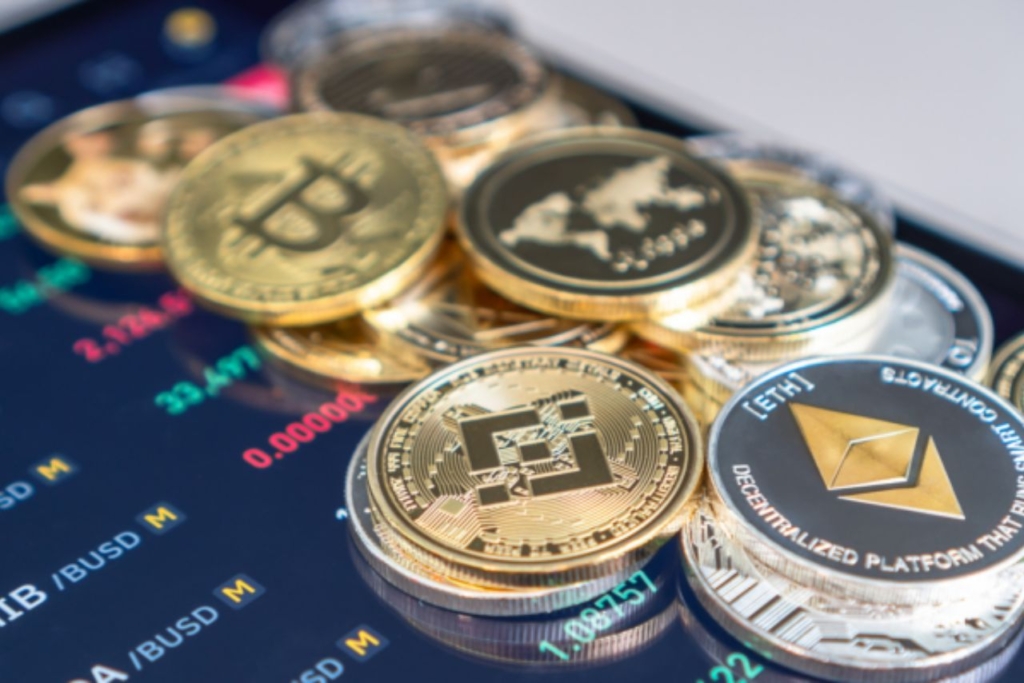Contents
- 1 Cryptocurrency Alternatives: Exploring Five Compelling Options Beyond Bitcoin and Ethereum
Cryptocurrency Alternatives: Exploring Five Compelling Options Beyond Bitcoin and Ethereum
In the dynamic realm of cryptocurrencies, Bitcoin and Ethereum have long been dominant forces. However, a new wave of digital assets is capturing attention, offering distinctive features and advantages. Let’s delve into five intriguing alternatives that are causing ripples in the crypto sphere.
USDC (USD Coin): Stability Amid Market Volatility
Established in 2018, USDC has swiftly risen to prominence as a leading stablecoin with a market cap exceeding $34 billion. This digital currency seeks to offer a secure harbor in the stormy crypto waters by pegging its value to the US dollar.
USDC blends the flexibility of cryptocurrencies with the stability of traditional finance. It enables users to conduct cross-border transactions without reliance on banks, streamlining and enhancing the efficiency of transfers. Additionally, USDC presents an appealing alternative to savings accounts, as numerous crypto exchanges provide attractive interest rates on deposits.
Despite its strengths, USDC may encounter challenges ahead. Its reliance on tangible assets renders it susceptible to regulatory scrutiny. Moreover, the advent of central bank digital currencies could potentially impact the future demand for stablecoins like USDC.
BNB (Binance Coin): Fueling Growth Through Utility
Introduced in 2017, BNB has evolved into a major player with a market cap surpassing $88 billion. This token powers the expansive Binance ecosystem, home to one of the world’s largest cryptocurrency exchanges.
BNB’s utility extends beyond facilitating transactions on Binance. Holders benefit from trading fee discounts, making it particularly appealing to high-frequency traders. As the Binance ecosystem broadens, so do the potential applications of BNB, encompassing the Binance Academy and decentralized exchange.
Nevertheless, BNB’s centralization raises concerns. With Binance holding over 80% of the circulating supply, the potential for price manipulation exists. Furthermore, regulatory hurdles in various jurisdictions could influence BNB’s future growth and adoption.
USDT (Tether): Pioneering Stability in the Crypto Realm
Tether, founded in 2014, boasts the largest market cap among stablecoins at over $120 billion. Analogous to USDC, Tether aims to preserve a steady value by pegging to diverse assets, including the US dollar, Euro, and gold.
Tether’s widespread acceptance renders it highly liquid and broadly recognized. It facilitates swift, secure, and confidential money transfers while maintaining relative price stability. Numerous online platforms and crypto services now embrace Tether as a viable payment method.
However, Tether has faced persistent scrutiny regarding its asset reserves. Questions concerning its backing remain unresolved, despite an investigation by a law firm in 2018. Additionally, Tether’s employment in illicit activities has attracted attention from law enforcement entities.
XMR (Monero): Elevating Privacy to Prominence
Introduced in 2014, Monero distinguishes itself through its emphasis on privacy. With a market cap exceeding $2.99 billion, XMR offers unparalleled anonymity in transactions.
Monero employs cutting-edge technology to obfuscate sender, recipient, and transaction amounts. This privacy-centric attribute appeals to individuals prioritizing confidentiality in financial dealings. Moreover, Monero’s mining process is more inclusive, enabling participation with rudimentary computer hardware.
Nevertheless, Monero’s privacy features have attracted regulatory and law enforcement scrutiny. Its utilization in illicit ventures raises red flags, potentially leading to bans or restrictions in certain jurisdictions. Moreover, the consolidation of mining power in select pools challenges Monero’s claims to decentralization.
AVAX (Avalanche): Facilitating Blockchain Connectivity
Established in 2012, Avalanche has emerged as a promising platform for interoperability, boasting a market cap of $11.58 billion. AVAX aims to streamline efficient, real-time settlements and transfers across diverse blockchain networks.
AVAX offers rapid transaction speeds and minimal fees, positioning it as an enticing option for myriad applications. Its focus on interoperability positions it favorably in an increasingly interconnected blockchain landscape. The platform’s scalability and performance have captured the interest of developers and investors alike.
Despite its promise, AVAX confronts stiff competition in the smart contract platform sphere. Established incumbents and emerging projects continuously vie for market presence. Additionally, akin to numerous nascent cryptocurrencies, the long-term stability and adoption of AVAX remain uncertain.
As the crypto arena continues to evolve, investors and users are advised to meticulously assess their options and conduct thorough research before making decisions.
Start Your Stock Market Journey Today!
Interested in learning about Stock Market trading and Investing? Explore exclusive Stock Market courses by FinGrad, the educational arm of Trade Brains. You can enroll in FREE courses and webinars available on FinGrad today to advance your trading career. Join now!





























